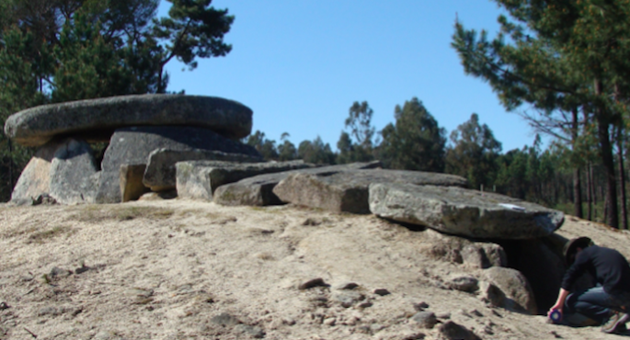n2doc
n2doc's JournalHome Computers Connected to the Internet Aren't Private, Court Rules
A federal judge for the Eastern District of Virginia has ruled that the user of any computer that connects to the Internet should not have an expectation of privacy because computer security is ineffectual at stopping hackers.
The June 23 ruling came in one of the many cases resulting from the FBI's infiltration of PlayPen, a hidden service on the Tor network that acted as a hub for child exploitation, and the subsequent prosecution of hundreds of individuals. To identify suspects, the FBI took control of PlayPen for two weeks and used, what it calls, a "network investigative technique," or NIT—a program that runs on a visitor's computer and identifies their Internet address.
Such mass hacking using a single warrant has riled privacy and digital-rights advocates, but Senior U.S. District Judge Henry Coke Morgan Jr. upheld the use of the warrant and even stated that the warrant is unnecessary because of the type of crime being investigated and because users should have no "objectively reasonable expectation of privacy."
Even using countermeasures, such as the Tor network, does not mean that the user should expect their location or their activities to remain private, according to the judge.
more
http://www.eweek.com/security/home-computers-connected-to-the-internet-arent-private-court-rules.html
CDC issues warning on multidrug-resistant yeast infection
The Centers for Disease Control and Prevention (CDC) is warning US healthcare facilities about the emergence of a multidrug-resistant type of yeast that has caused deadly hospital infections in several countries since 2009 but has yet to appear in US patients.
The yeast, Candida auris, has most commonly caused healthcare-associated invasive infections such as bloodstream infections, wound infections, and otitis, and it has typically occurred several weeks into a patient's hospital stay, according to a CDC news release.
The first case was found in a Japanese patient with an ear infection in 2009, and since then C auris cases have been reported in eight other countries, with two unnamed countries reporting healthcare outbreaks involving more than 30 patients each, the agency said.
more
http://www.cidrap.umn.edu/news-perspective/2016/06/cdc-issues-warning-multidrug-resistant-yeast-infection
The 6,000-Year-Old Telescope
Telescopes as we know them today trace their origins back to the Enlightenment. The earliest such devices emerged about 400 years ago. But humankind has fashioned environments for stargazing for far longer than that.
Scholars have long speculated about the astronomical orientation of the Pyramids at Giza, for instance, and the possibility that Stonehenge was built to be a celestial observatory.
Now, there’s evidence of ancient telescopic structures that date back even farther, to about 6,000 years ago. Astronomers are exploring ancient tombs in Portugal that they believe may have been used by prehistoric humans to enhance specific views of the night skies. Researchers are focusing on the alignment of the stars with megalithic tombs—stone structures known as dolmens that feature long narrow entrances that act as apertures, essentially zooming in on stars and planets that wouldn’t always be visible from the outside. “These structures could therefore have been the first astronomical tools to support the watching of the skies, millennia before telescopes were invented,” the Royal Astronomical Society wrote in an statement announcing the research on Wednesday.

more
http://www.theatlantic.com/technology/archive/2016/06/oldest-telescope/489362/
The Role of Cats in Anglo-Saxon England
Was the human-feline relationship in Anglo-Saxon times very different from today? Researchers look to the archeological record for clues.
By Zazie Todd
Research by Kristopher Poole of the University of Nottingham investigates the role of cats in Anglo-Saxon England. The period from 410 C.E. until the Norman invasion of 1066 was a time of great change. The Roman Empire had lost its control and many people immigrated to England, particularly from northern Europe. The urban population grew as small towns developed, and the spread of Christianity brought changes in people’s belief systems. What kind of relationship did people have with cats during this time?
Fur is probably not the first thing you think of, but evidence from bones suggests that some cats — especially young ones — were used for fur. It isn’t known if the cats were bred for this or if they were captured. Cat bones found at Coppergate in York suggest the cats were skinned. “It would therefore seem that there was at least some commercial exploitation of cat furs in towns, although exactly how extensive this was is uncertain,” Poole says. “Notably, none of the cut marks on cat bones from this period indicate that the cat was seen as a food source.”
Mousing is an obvious use for cats, and was probably especially important in the urban areas. A 10th century Welsh text, The Laws of Hywel Dda, mentions this role when it describes what is important in a cat: “that it do not devour its kittens, and that it have ears, eyes, teeth and claws, and that it be a good mouser.” Mousers were probably not fed much in order to keep them hungry for their work.
And it seems that some cats were kept as pets. One source of evidence is that individual cats are given names in texts from the time. A famous example of this is the 9th-century poem “Pangur Bán,” written by an Irish monk and found in an Austrian monastery, about a cat called white Pangur (see here for two translations).
more
https://psmag.com/the-role-of-cats-in-anglo-saxon-england-4dc2826a7676#.doxmyg5f3
Profile Information
Gender: Do not displayMember since: Tue Feb 10, 2004, 01:08 PM
Number of posts: 47,953






































































